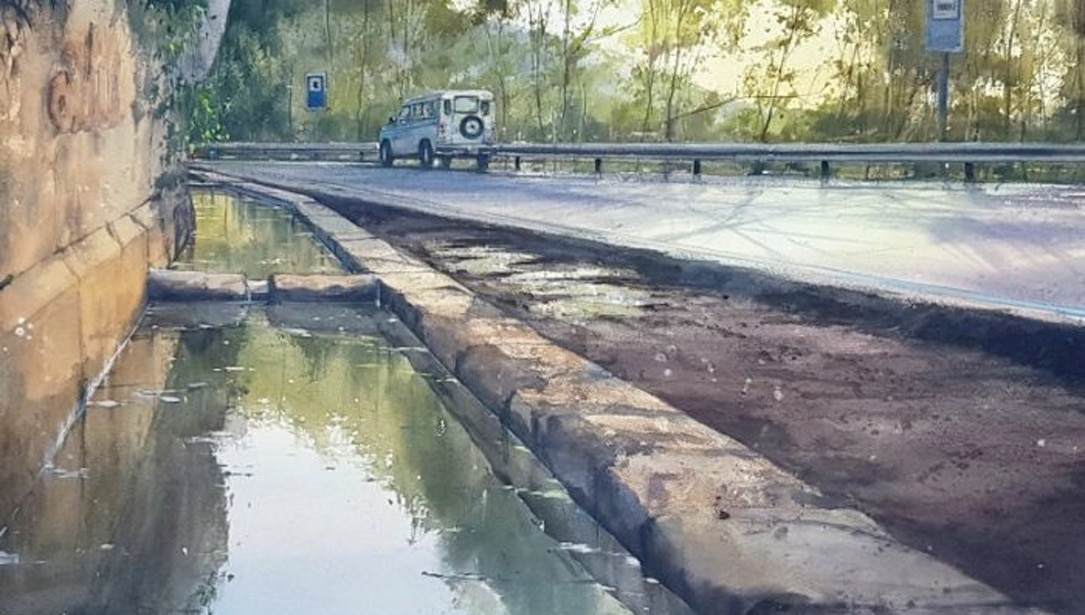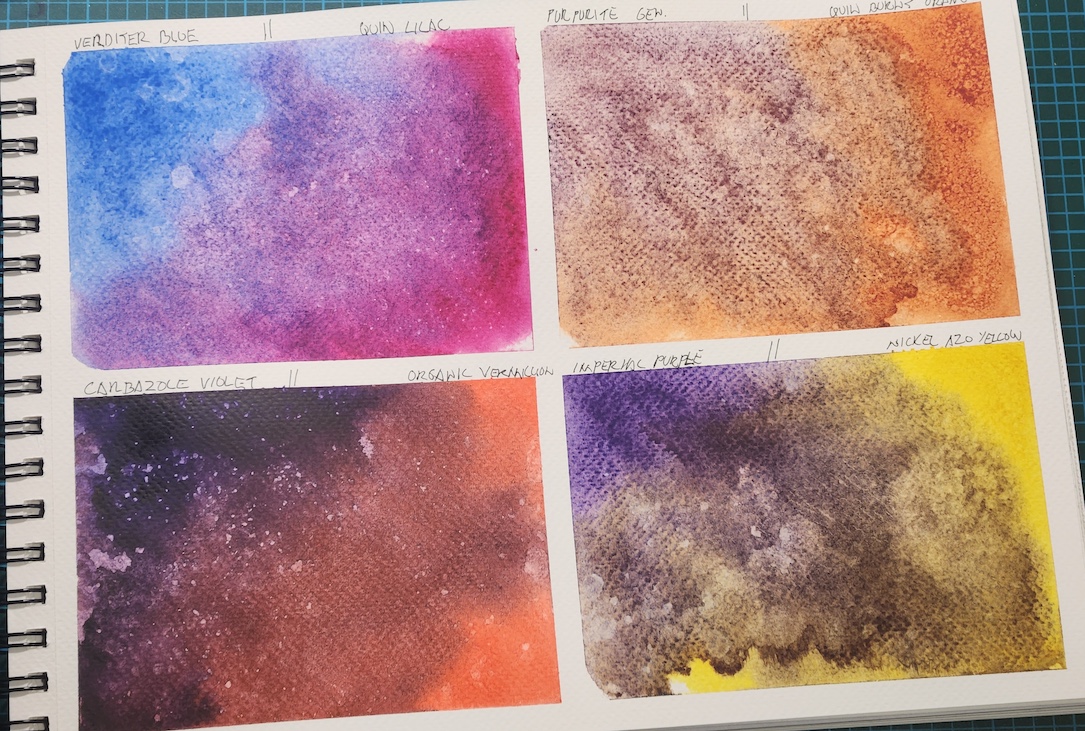Interpretation of our complex visible world involves more than just innocent eyes; it requires a thoughtful and directed approach which belies mere copying. An aesthetic judgement of an object which would not be considered beautiful in the traditional sense, requires the viewer to contemplate a combination of qualities, including shape, colour and form. It is with the aesthetic sensibilities of an artist that I pursue the objects of my fascination. I consider everything as I stalk my subject matter like prey, looking for the merest hint of colour or textural elegance that would suggest a worthy topic to render. The light which these objects of subject are displayed can mean the difference between further examinations and interrogation, or that of a mere glance.
Once my gaze has met with a theme worth spending time on, I will devote anything between 5 minutes and 2 years discovering its potential. Most of my subject matter is sitting there in plain view, ignored, neglected, condemned and most importantly for me, unseen by passers-by. We walk the streets looking but not seeing, visible but invisible, it sits quietly, passively unconsidered.
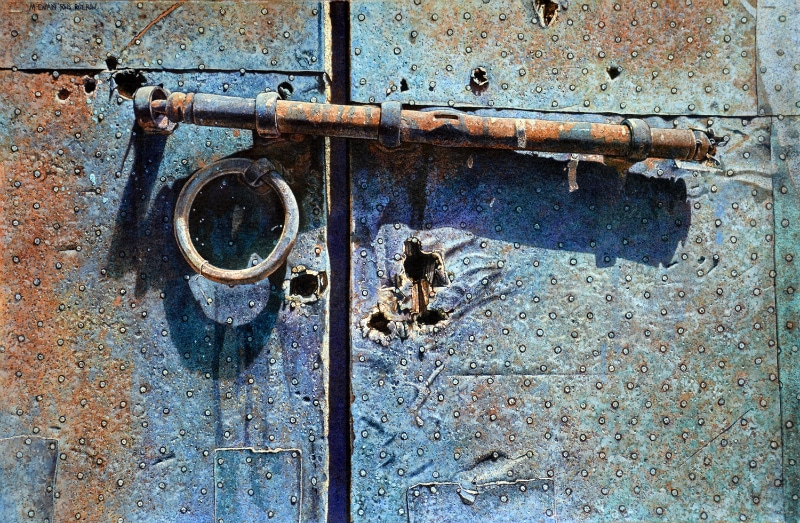
“Locked & Loaded II”
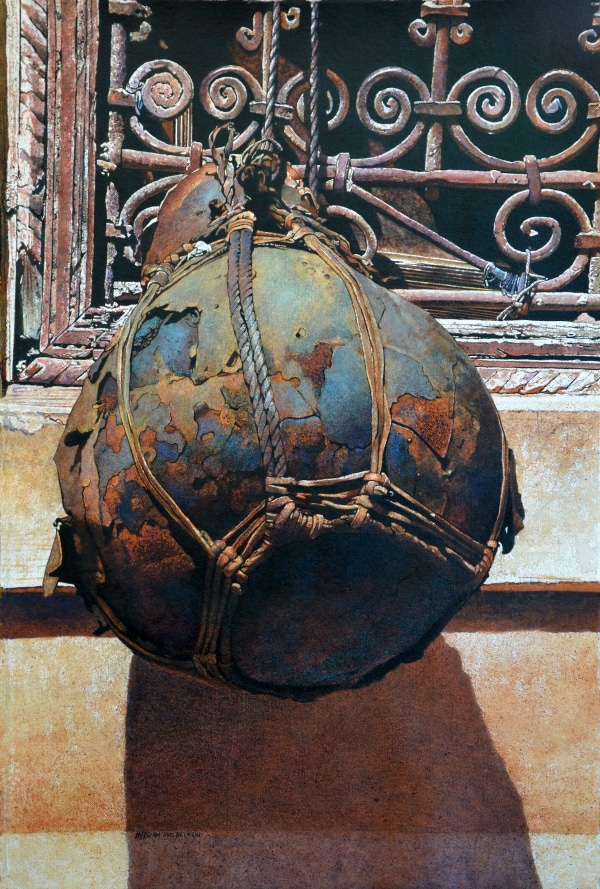
“Global Crisis”
These moments of discovery are rare and their revelation like finding the Ark of the Covenant, but not every discovery can become subject matter. It can be whilst sketching on site that the full potential of an idea can reveal itself or be discarded as a fleeting thought. The act of creation is for me a long process which has a starting point in some very quick drawings which in turn, can become an obsession which may take many months to resolve.
The idea of beauty in the mundane is not a new concept, but it drives me to help enlighten those that haven’t considered the pleasure to be found in an old door with its flaking, faded paint. It’s chipped wooden or rusting surface slowly eroding through time and weather. The stone or plasterwork which now resembles the surface of the moon with its cratered, pock marked textures and faded colour. Have you ever noticed the rust stains from an Iron grate surrounding an ancient window like a weeping angel? It’s beautiful Iron oxide pigment staining the surface below without anyone caring or even noticing.
My painting process is varied and sometimes quite lengthy, but I try where possible, to make it interesting and un-repetitive as there is nothing worse than routine or boredom to kill inspiration. My subject matter is also quite varied and can be a truck on a street corner, to a pedestrian passing by a beautiful wall, to an old weathered and fading door. Most of my images and ideas come from my travels and for me, it is the buzz I get from seeing new and interesting places, the exploration of unknown streets, new faces, and the surprise you get when you turn a corner and are greeted with an image that really gets you excited.
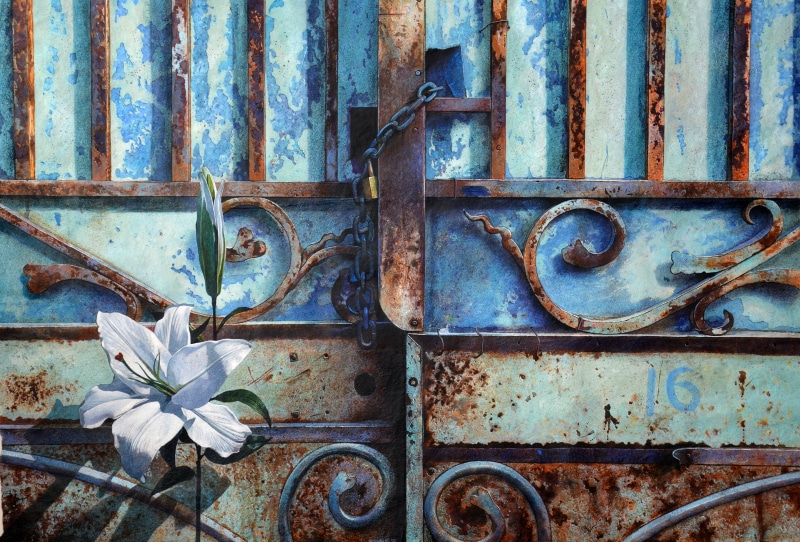
“Natural Selection”
Normally I carry around a sketchbook, small watercolours, a couple of brushes and pencils (coloured and graphite) and a camera. Everything depends on time and situation, if I am in a hurry I may just take some images with my camera. If I have time I will do a quick drawing, but if the subject is most definitely one I will reuse later, then I invest a bit of time and do a small painting on site. It really depends on what I am looking for in the image. Is it just a quick compositional study or, as can happen quite often, I am immediately struck with a flow of ideas and potential compositions on how to tackle any given subject matter. If I really like the image I will return frequently at different points in the day to see how the sunlight affects the subject as shadows and colours can be changed quite dramatically with the elements. If I take the opportunity to work on an interesting subject, I find that I need to work very fast as the light and shadow shapes change very quickly. That initial buzz of excitement when seeing a shadow for the first time, thrown up due to the sun, can change very quickly and dramatically, so I normally photograph the subject continuously while I work. I therefore, will have a selection of images at different stages which help inform me what I am doing.
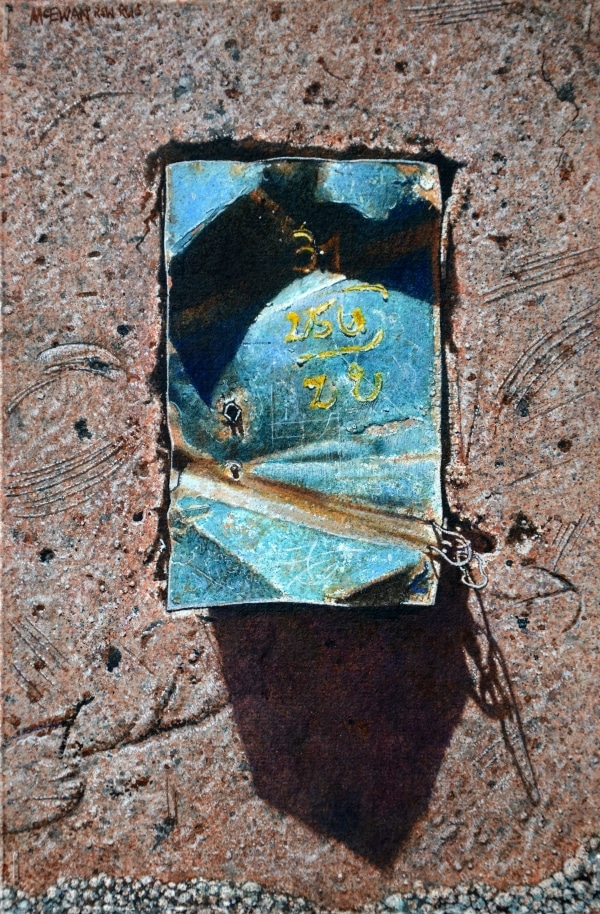
“Bent of of Shape”
When I eventually return to the studio – I collect my drawings, paintings and photographs and bring them into the workspace, along with found objects, together these help me develop my watercolours. Quite often a painting is a summation of a number of different elements brought together, to produce a final image that may or may not have existed. There is a deliberate attempt to not just faithfully reproduce a surface, a photograph or an object, but to reinterpret it in a way that will produce a strong final piece that is hopefully very unique.
Over the years I tend to be attracted to very similar subject matter although, I try to be open minded about what I paint. I certainly don’t go out of my way to look for anything in particular but, certain themes undoubtedly keep reoccurring. Anything that has character, that looks a little unusual but, not contrived, will catch my eye. Composition is a very important element to me and everything is considered before being set aside, again I try to not to have any pre-set thought on how things should look or how I want them to be. Instead, I use a gut instinct about how I feel about composition, I am fairly adept at being able to recognize how the eye travels around a picture or surface, and I can usually command that part of the compositional process like a conductor with an orchestra. In my youth, I was very caught up with using the golden section and it would predetermine how I would set up my paintings and imagery, and if it did not fit or work without changing things an awful lot then, I would move on and reject that as a subject matter. Now I am a lot less restrictive and will go with my intuition and experience to guide me.

“Bare Bones”
Most of my paintings which are exhibited, are worked on in the studio as most of my sketches and drawings completed on site, are wholly considered by me to be support material, and not for viewer consumption. I often work with a sketchbook open on a table in the studio, where I can bounce ideas, thoughts, compositional studies, and even colour while working on a painting. This usually means my sketchbooks are a conglomerate of images and writings with no obvious sense of structure, but that is fine as they are again not for anyone else other than myself, to help me solve visual problems and to capture ideas.
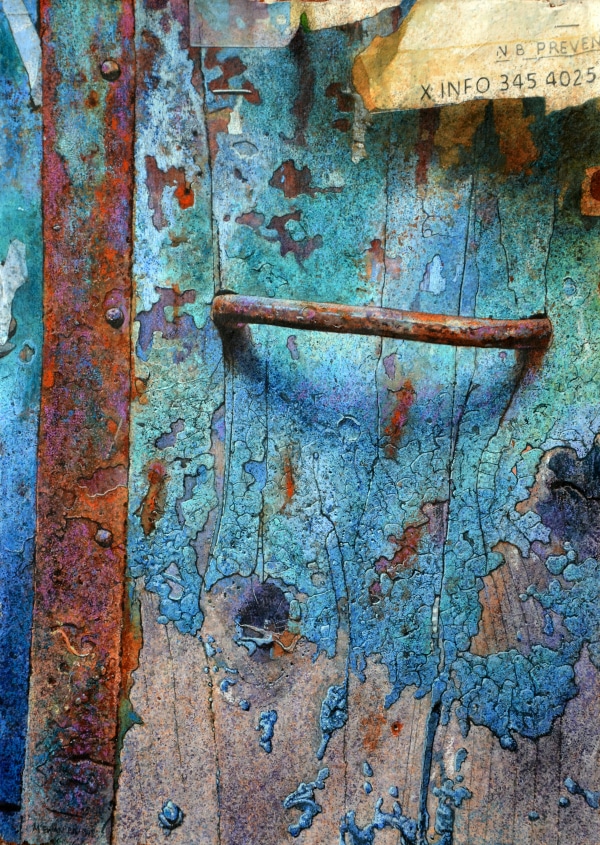
“Colour of Time”
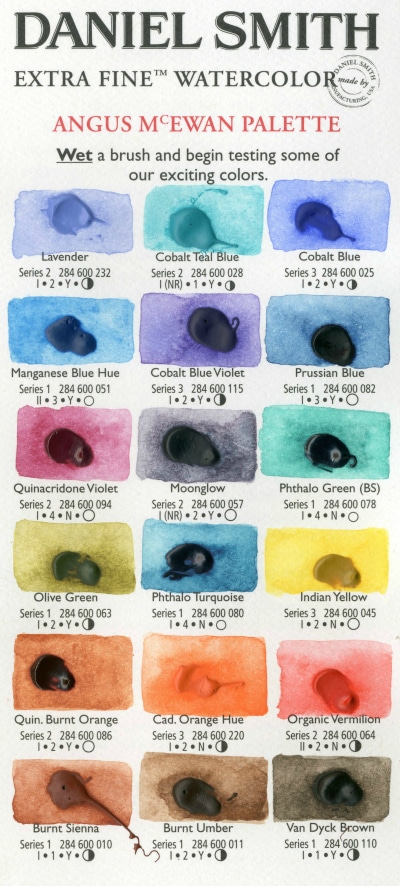
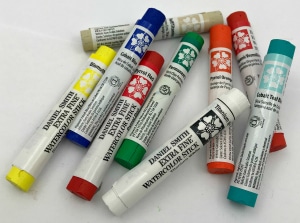
When in the studio I primarily use paint from DANIEL SMITH. My experience with their paints suggest that they have high pigmentation and good light fast qualities and have a lot of colours which are unmatched by other manufacturers. My palette can be quite large and varied, but there is a core selection of colours which I often use. Prussian Blue and Van Dyck Brown to make black, pale Cerulean Blue and Transparent Pyrrol Orange are often used at the beginning of each painting while I establish form. I also use a variety of different blues and browns, Olive Green and Cobalt Teal Blue, Organic Vermilion, sienna’s and Indian Yellow are similarly amongst my most popular colours and of course, Chinese White to produce a selection of tints.
My DANIEL SMITH Watercolor Dot Cards have a small selection of must have paints from my palette. They contain colours I couldn’t do without and usually comprise of colours that are difficult to reproduce from a basic colour range due to their intensity and strength of pigment. The latest colour in the DANIEL SMITH range is Lavender and it is a colour that I certainly use in most, if not all my paintings. Cobalt Teal Blue and Manganese Blue Hue are also must have, and almost always used colours.
I have also recently used DANIEL SMITH Watercolor Sticks, these have proven to be indispensable especially when working out in the field as they can apply solid, strong colours over the top of darker watercolour washes. I use the watercolour sticks as and when I need to, but they do come alive when you work on a damp surface or add water to a drawn line. I particularly like using the Pyrrol Orange, Organic Vermilion, Permanent Green Light and Cobalt Teal Blue when they are “dry” as they have a beautiful intensity to them. Cobalt Blue, Pyrrol Red and Bismuth Vanadate Yellow are very strong when water is added, and I like the fact that I can use the Titanium White and Buff Titanium over the top of dark colours. It all adds into a broader range of watercolour techniques and helps with the development of the artistic experience.
I also use colour pencils and although I don’t use them very much now, I have in the past used them on top of watercolour washes to augment colours and to help with drawing. This is one of the many reasons I enjoy working with watercolour; it is clean, doesn’t smell, dries very quickly, light and easy to carry and, I can modify them easily by drawing on top, rubbing back and washing away, but this all relies on a good strong foundation.
As with my paint I have experimented with different surfaces to work on. This has led me to even experiment with collage using hand-made papers to create different surface textures which will then be worked on with watercolour. I have found this a very interesting way of working but is does have its problems especially where different weights of paper absorb more or less than its neighbour and so some areas of the painting can take longer to dry than others.
The support for watercolour is traditionally paper and special watercolour paper using 100% cotton, which is specifically acid free means that the chances of longevity is now very high. As long as the watercolour paints are of good quality and kept in fairly low light levels of around 50 lux or less, the paintings will last for centuries, as can be seen in the watercolours of Albrecht Durer.
I personally predominantly use handmade papers for a number of reasons; I find each piece of paper unique, the hand and skill of the paper maker is fundamental to the process of making a sheet of watercolour paper, a work of art in itself. As such, some pieces can be irregular in shape, come with a deckled edge which I love and can be under or oversized, these all contribute to a unique experience, and the skill of the painter is to manage all the inconsistencies and produce an artwork worthy of the paper.
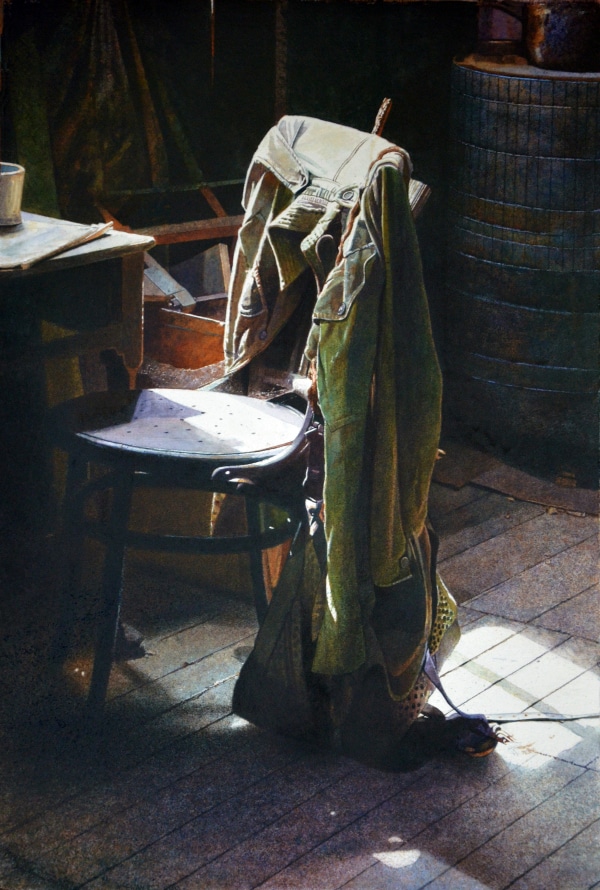
“Tea Break”
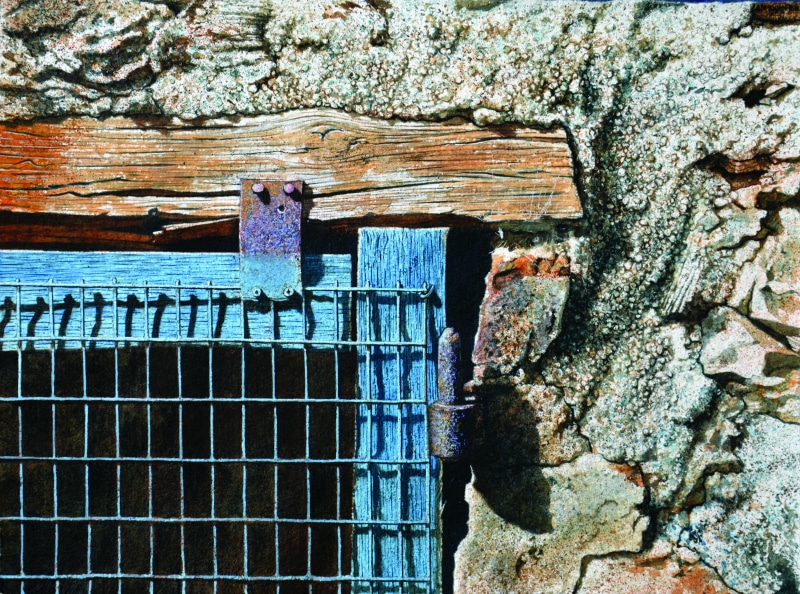
“Busy Corner”
I have been using high quality watercolour paper to work on for over 30 years, but it has been a relatively recent phenomenon for me to work on the Handmade Paper produced in the papermaking museum in Fabriano- Museo della Carta e della Filigrana. I prefer to use “Rough” which is a term for an irregular bumpy surface instead of the smooth ”Not” (rough) which you can still get depending on the woollen felt that the paper is initially laid on. I like the rougher surface because it helps me with the creation of multifarious textures within my paintings. I have also used Indian handmade paper which can be slightly more yellow in colour than the Italian paper, and more buckled in appearance, but the surface is also very nice to work on. There are of course many different companies, and therefore many variations and types of paper, and it usually come down to individual preference, these just happen to suit the subject matter I use and the way I work.
For me a good brush is invaluable, but I use many different types and varieties of brush depending on what I want to do- some are very expensive, and some are cheap hobby brushes. I will use large 1 to 2-inch wash brushes for large areas of flat washes including skies, I will use mop head brushes for more calligraphic marks. I also use small ¼ inch one stroke synthetic brushes to do smaller broad areas of flat painting such as dark areas. When these become sufficiently worn out or splayed they are then drafted in to be used for stippling, dry brushing and splattering. I use “rounds” to draw and apply paint with using the point and the sides, riggers for fine lines; synthetic brushes because they are hard wearing but sables because they hold a lot of water. I particularly find small handled brushes easier to use as I can control them better, hobby brushes provide that controllability, but the hairs don’t quite match the quality I would normally expect. I also employ a number of different tools to create marks which help me in my paintings. Sponges, scrunched up paper, tissue paper, plastic film, salt, plant sprays and occasionally air brushes are all at my disposal and I will use them if it is appropriate.
I try to man-handle and bully my watercolours and brushes to describe without the obligatory thousand words, the splendour I find in the ordinary. I have found many ways of bending the paint to my will in order to make it honour the subject matter appropriately and with time, I have become more adept at finding subjects that test me to the fullest. I hope after viewing my work you will take a moment as you walk down a familiar street to consider and appreciate the magnificence of everything around you, an amazing world “Hidden in Plain Sight”.





